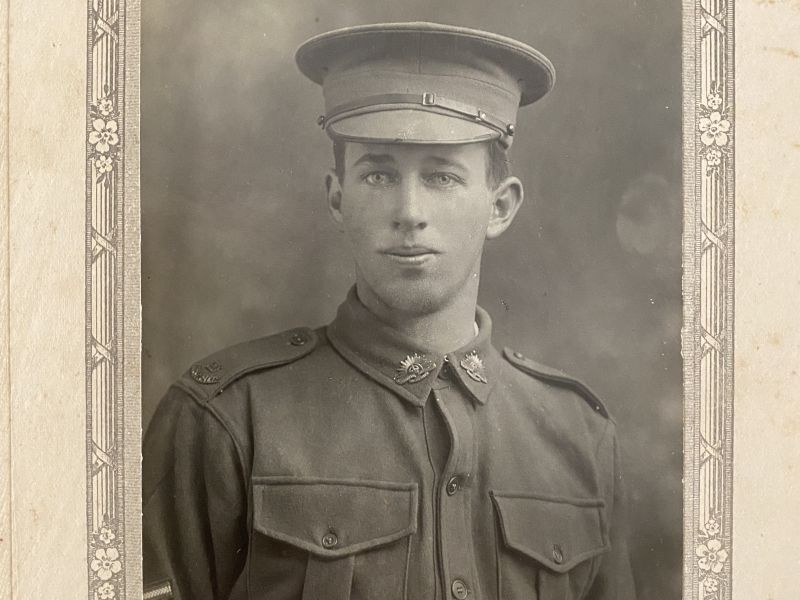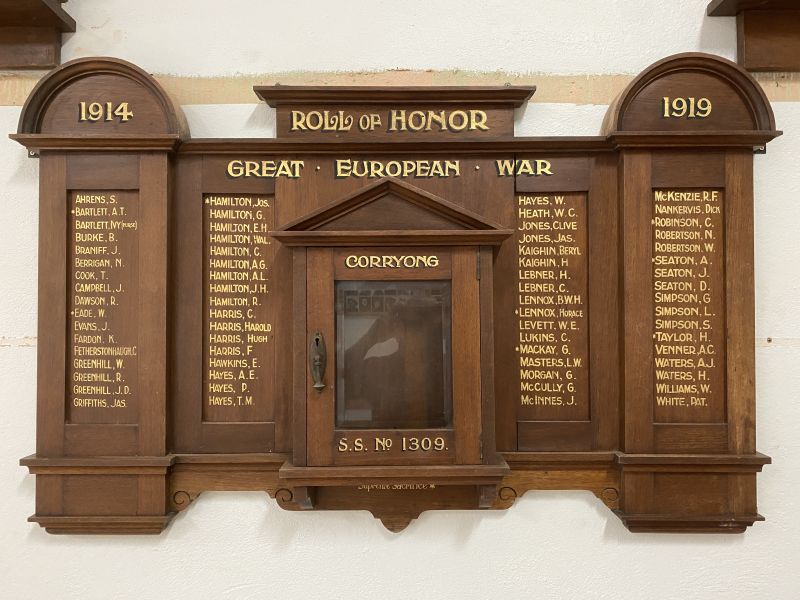Alexander Galt Seaton
Alexander Seaton was born in Corryong in 1888, to Robert and Janet Alexandrina Seaton. He attended both Corryong and Mt Elliot State Schools. His father, Robert, died in 1913, just three years before Alex enlisted in the AIF. He grew up in the Corryong area, and his occupation, according to his enlistment papers, was a farmer.
On the 2nd of February 1916, Alex joined the AIF. Upon enlistment, he was described as being 5 feet 8 and ¼ inches in height, weighing 11 stone, 7lbs, with light brown eyes and brown hair. Alex, Regimental number 1910, enlisted as part of the 2nd Reinforcements for the 37th Battalion. The 37th Battalion was formed as part of the 10th Brigade of the 3rd Australian Division.
On the 16th of August, after training in Victoria, the 2nd Reinforcements embarked for England on the RMS Orontes. Also in the 2nd Reinforcements was another Corryong lad, John William Guest. Following a further four months of training in Britain, Alex sailed to France on the S.S. Victoria. It would be another month before he would join his unit at the front, as he spent some time at the 26th General Hospital with skin problems. Upon arriving at the front he was transferred to the 3rd Canadian Tunnelling Company for approximately two weeks.
Back in the field with the 37th Battalion, he was wounded twice, on consecutive days, and admitted to the 9th Field Ambulance with gunshot wounds to the back. Dates on Alex’s record of active service become confused at this point, however, it is known with some certainty that on the 10th of June 1916, he was admitted to the 3rd Canadian General Hospital at Bologne with severe gunshot wounds to the back. These wounds he obtained at the battle of Messines, in Belgium. This was the first major battle fought by the 37th Battalion.
The Battle of Messines was undertaken for the purpose of capturing the Wytschaete-Messines ridge; the capture of this was essential to plans for an offensive to occupy the Belgian coast. A seven-day preliminary bombardment began on 31 May, while at 3.10 am on 7 June mines containing a million pounds of ammonal were detonated. There was no doubt that Alexander, in his stint with the 3rd Canadian Tunnelling Company, would have been involved in the digging of these mines. The blast of these detonated mines was heard by David Lloyd George, the British Prime Minister who was in his study at 10 Downing St in London. The resultant explosions created massive craters and obliterated the German’s frontline positions. The Battle of Messines is also well known for the British use of tanks during the battle. Unfortunately, Alexander succumbed to his wounds three days later on the 13th of June. He was buried in the Bologne Eastern Cemetery in France.
Alex is remembered at the Australian War Memorial Roll of Honour, and the Corryong War Memorial. For his service during the First World War, Alex was awarded the British War medal and the Victory Medal.

 Stephen Learmonth
Stephen Learmonth
